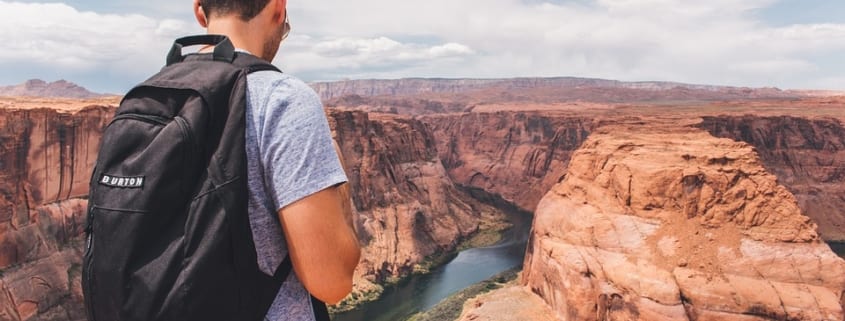Grand Canyon Officials Making Plans to Improve Backcountry Experience
The public has until February 24, 2016, to comment on proposals being considered by National Park Service (NPS) officials to improve management of the hiking, rock climbing, camping, and other activities in the Grand Canyon’s backcountry. The proposals are designed to improve visitor experiences in the backcountry, as well as protect the canyon’s natural resources.
The backcountry of the Grand Canyon consists of the vast rugged terrain beneath the rim. Although most canyon visitors restrict themselves to lookouts and trails along the rim, the numbers of more adventurous visitors trekking into the backcountry for recreation and exploration have been increasing in recent years. More than 30,000 visitors per year spend the night in the canyon backcountry, generally using well-worn trails starting along the rim to reach their deep destinations. The activities of these visitors, including the growing popularity of canyoneering (involving a combination of hiking, climbing, rappelling, swimming, kayaking, spelunking, and other physical challenges), have added strains on the canyon’s resources and risks to its natural components. Furthermore, problems of noise, litter, and long lines for toilet facilities have marred the experience for many visitors.
NPS officials hope to address these and other concerns with their new proposals, which—upon consideration of public comments—will likely be modified and implemented within a couple years.
The NPS designates much of the 1.1 million acres of Grand Canyon backcountry as wilderness. That designation mostly forbids the use of motor vehicles, power drilling (for inserting bolts into rocks), and other human activities that have the potential to seriously damage the natural environment. Four zones are used to classify the backcountry area according to available amenities—ranging from developed campsites and lodging with water faucets to sites with no amenities and only natural water sources. These designations—in place since the 1980s—do not take into account the more recently popular multiday canyoneering expeditions.
Canyon officials are seeking to gather more accurate data on the numbers of visitors who participate in various activities and the numbers of days that their visits last. These data will aid them in developing new policies for anchoring ropes and other actions that are currently not covered in backcountry permits. Restrictions on the number of people who can use certain trails on any given day are among the proposals being examined. New plans would institute a single-day permit, costing at least $5, for hiking more than 5 miles on the three most popular backcountry trails—Bright Angel, South Kaibab, and North Kaibab. Group sizes might also be limited. The main goal of the plans is to reduce overcrowding and improve the experience for hikers.
To learn more about the four main options under consideration—including one option that would basically leave the situation as it is now—the public is encouraged to visit: http://parkplanning.nps.gov/grca.

 https://pixabay.com/en/adventure-arid-canyon-cliff-desert-2179282/
https://pixabay.com/en/adventure-arid-canyon-cliff-desert-2179282/

 https://www.oars.com/blog/meet-martin-litton-grand-canyon-dories-founder/
https://www.oars.com/blog/meet-martin-litton-grand-canyon-dories-founder/